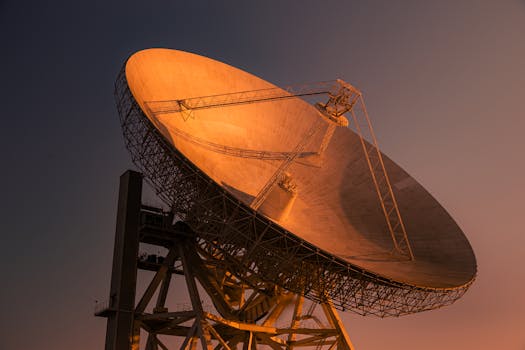Satellite Telecommunications 2023: Key Developments and What They Mean for the Industry

Satellite Telecommunications 2023: Key Developments and What They Mean for the Industry
Satellite Telecommunications 2023 has been a transformative year for the satellite telecommunications industry, with numerous key developments that are poised to revolutionize the way we communicate globally. The industry has experienced significant growth, driven by advancements in technology, increased demand for satellite-based services, and the expanding need for global connectivity. In this article, we will delve into the major developments that have shaped the industry in 2023 and explore their implications for the future.
The satellite telecommunications industry has been at the forefront of innovation, with companies like SpaceX, Amazon, and OneWeb leading the charge. These companies have been launching constellations of satellites into low Earth orbit, providing high-speed internet services to remote and underserved areas. This has not only bridged the digital divide but also enabled the deployment of critical communication infrastructure, such as 5G networks and IoT devices.
One of the most significant developments in 2023 has been the launch of the Starlink constellation by SpaceX. This constellation consists of thousands of satellites that provide high-speed, low-latency internet services to consumers and businesses worldwide. The Starlink constellation has been instrumental in providing connectivity to areas affected by natural disasters, such as hurricanes and wildfires, and has also enabled the deployment of critical communication infrastructure in remote areas.
Advancements in Satellite Technology
Advances in satellite technology have been a major driving force behind the growth of the satellite telecommunications industry. The development of smaller, more efficient satellites has reduced the cost of launching and operating satellite constellations. This has enabled companies to launch more satellites, providing greater coverage and capacity. Additionally, advancements in propulsion systems have increased the maneuverability and lifespan of satellites, enabling them to operate for longer periods and reducing the risk of collisions.
The use of phased array technology has also revolutionized the industry. Phased array antennas enable satellites to steer and shape their beams electronically, providing greater flexibility and accuracy. This technology has enabled the development of high-throughput satellites that can provide multiple gigabits of data per second, making them ideal for applications such as broadband internet and 5G backhaul.
Implications for the Industry
The developments in the satellite telecommunications industry in 2023 have significant implications for the future of global communication. The increased availability of satellite-based services is expected to drive growth in the industry, with the global satellite market projected to reach $434 billion by 2025. The expansion of satellite constellations is also expected to create new opportunities for businesses and consumers, enabling the deployment of critical communication infrastructure and providing connectivity to remote and underserved areas.
However, the growth of the industry also raises concerns about the environmental impact of satellite launches and the increasing amount of space debris in Earth’s orbit. The industry must adopt sustainable practices and develop technologies that minimize the environmental impact of satellite launches and operations. Furthermore, the industry must also address concerns about the security and privacy of satellite-based services, ensuring that they are protected from cyber threats and data breaches.
Conclusion
In conclusion, the satellite telecommunications industry has experienced significant developments in 2023, driven by advancements in technology, increased demand for satellite-based services, and the expanding need for global connectivity. The implications of these developments are far-reaching, with the potential to revolutionize the way we communicate globally. As the industry continues to grow and evolve, it is essential that companies prioritize sustainability, security, and privacy, ensuring that the benefits of satellite telecommunications are available to all while minimizing the risks and challenges associated with this technology.



